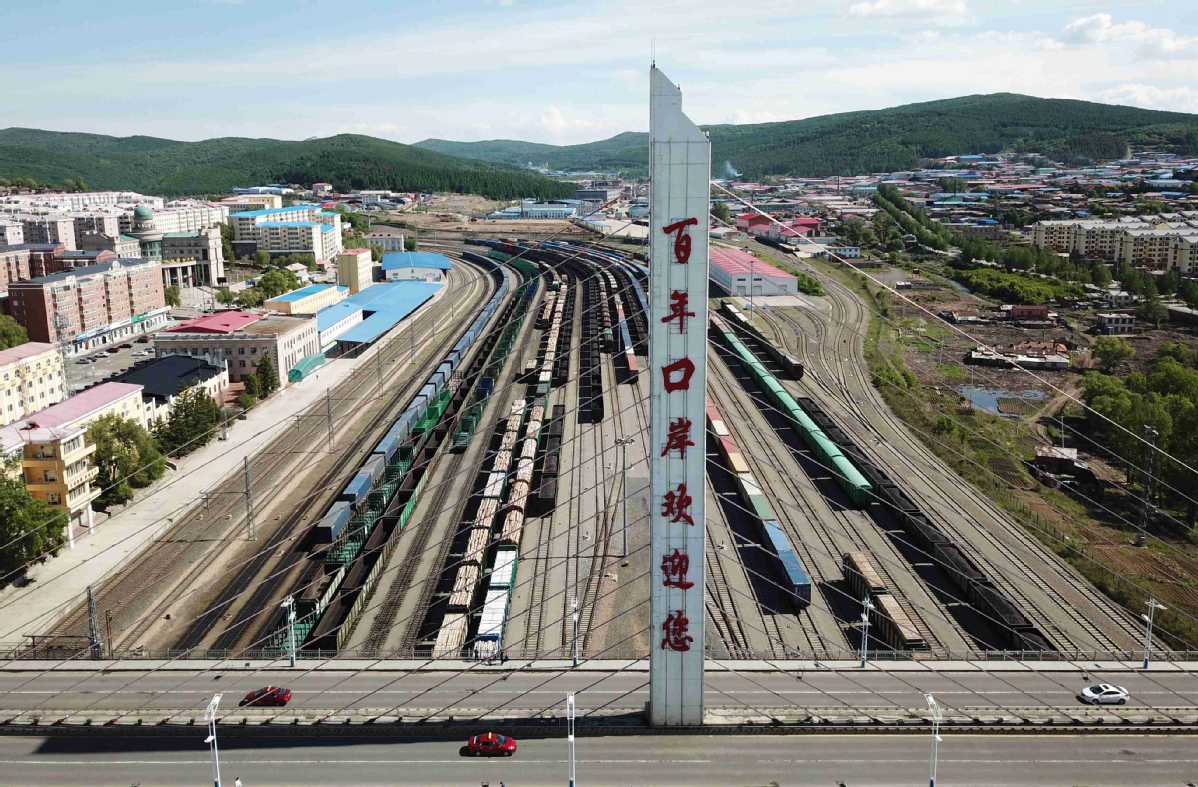Prosperous development of China-Europe freight trains boosts overseas trade

Freight trains rest on tracks of Suifenhe Railway Station in China's northernmost Heilongjiang province. The station serves as an important corridor for China-Europe freight trains. [Photo/Xinhua]
According to the China State Railway GrHARBIN-At Suifenhe Railway Station in China's northernmost province of Heilongjiang, freight trains are resting on tracks leading to Europe, with gigantic gantry cranes busily loading and unloading cargo above them.
In the first half, over 373 China-Europe freight trains passed through Suifenhe Port to Europe and carried 34,942 twenty-foot equivalent units (TEUs) of goods, up 74.3 percent and 82.9 percent year-on-year, respectively, according to China Railway Harbin Bureau Group Co Ltd.
Such an increase in international freight trains has been seen in the whole eastern corridor of the China-Europe freight train service. From January to June, a total of 2,212 trains and 212,866 TEUs of goods were handled at the Chinese land port of Manzhouli, in North China's Inner Mongolia autonomous region, both registering a year-on-year increase of 7.7 percent.
The China-Europe freight train service has three main corridors-western, eastern and central-with the Suifenhe and Manzhouli ports on the eastern corridor.oup Co Ltd (China Railway), the eastern corridor mainly focuses on the import and export of goods between East, South and Northeast China and European countries.
The efficient operation of international freight trains relies on supportive policies and measures. As the northern center of China's opening-up, Heilongjiang province has made an invested effort in accelerating Customs clearance and cargo handling, firmly supporting the development of the China-Europe railway service.
To ensure the smooth and steady inbound and outbound flow of China-Europe freight trains, Suifenhe Railway Station opened a green channel for cargo transportation, with its staff communicating with Customs administrators and freight-forwarding companies in advance.
Twenty-two China-Europe freight train routes currently run through Manzhouli and Suifenhe ports, carrying daily necessities and industrial machinery from Guangzhou of Guangdong province, Suzhou of Jiangsu province and other cities across China to numerous European countries.
The prosperous development of the China-Europe freight train service has greatly boosted international trade.
Heilongjiang saw its foreign trade in goods grow 31.9 percent year-on-year to 145.06 billion yuan ($20.7 billion) in the first seven months, according to Customs authorities in the capital city of Harbin.
Inner Mongolia's total import and export value hit 68.07 billion yuan from January to June, up 17.3 percent year-on-year, Hohhot Customs reported.
"Heilongjiang province will continue to expand the scale of foreign trade and promote the steady development of foreign trade by strengthening the role of trade platforms, accelerating the development of trade digitalization and focusing on the outsourcing work of key foreign trade enterprises," said Wang Xianhua, deputy director of the provincial department of commerce.


